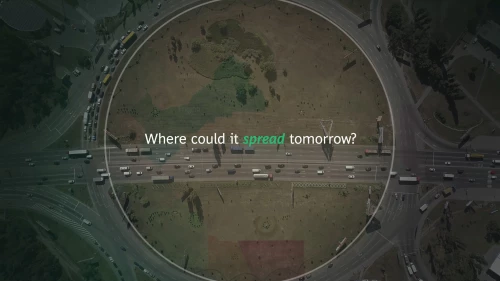The response to COVID-19 is complicated by differences in the timing and intensity of the disease’s impact across the United States. For those in health care and public health, the key to managing COVID-19 is nuanced planning and rapid reaction—at both national and local levels. Exploring various scenarios of where and how fast the disease could overwhelm local health systems is essential to a coordinated, effective response.
Beyond the immediate priorities in health care, industries from travel to retail to energy need scenario planning to understand the extent of economic impact in communities across the country as the nation looks toward recovery. Companies must also assess the implications for their workforces and for their suppliers and partners.
Moreover, because complete eradication of the virus is unlikely in the near-to-medium term, business, community, and government leaders will need the capability to assess the impact of COVID-19 on an ongoing basis—for a period that extends well beyond our current efforts to “flatten the curve”—to rapidly inform decision making.
The essential enabler for effective planning is a tool that can evaluate demand and supply in usable ways, under varying scenarios, and at both broad and granular levels. In a crisis such as this one, in which the situation changes daily, the model must be flexible, updating as new and better data become available. The model must also present information in ways from which the user can immediately draw conclusions and plan accordingly.
Preparing Localities for Action Against Novel Coronavirus (PLAN)
Leveraging its global resources and expertise in health, data science, and strategic decision making, BCG has developed such a tool, which we call PLAN, for Preparing Localities for Action Against Novel Coronavirus. PLAN is a scenario tool that identifies potential US supply and demand imbalances at the county level.
PLAN has three key components:
- An epidemiological model that incorporates commonly used data and disease assumptions to estimate the current prevalence of disease and make projections of incidence and the number of infected individuals requiring hospitalization and ICU care
- The best available data on capacity with regard to hospital beds, ICU beds, and ventilators, and a flexible architecture that enables modeling for any sort of supply or resource
- An interactive interface that allows for visualization and exploration of various scenarios, including different levels of public health intervention and other adjustments to capacity, such as reducing demand for medical services by deferring nonessential procedures
Flexibility in the Face of Uncertainty
We are in an early stage of understanding with regard to this infection and subsequent disease. Every day, newspapers are filled with stories about different models that yield widely divergent outcome scenarios. This is because of variations in critical sensitivities:
- Starting point: How many infected or infectious individuals are present in a geographic area at a given time?
- Severity of disease: Among the infected, what proportion will have severe cases and require advanced care?
- Impact of public health interventions: How do different public health interventions affect the spread of the disease? In unconstrained scenarios, exponential growth can imply very quick population-level catastrophes.
We use a transparent, flexible approach to epidemiological modeling, and PLAN can easily be adapted to use different assumptions about key unknowns. As better information becomes available, this data will be incorporated into the tool.
Planning Action Now—and Later
It’s already clear that the impact of COVID-19 will vary widely both geographically and temporally. The nation as a whole needs to prepare for a locally customized approach, recognizing that many areas are at high risk if mitigation efforts are not effective. We must act urgently to ensure that leaders have the timely insights they need to deploy resources. And when the immediate crisis has passed, there will still be a need for thoughtful, scenario-based planning to ensure rapid recovery and transition into the new normal.
Acknowledgments
The authors are grateful to their BCG colleagues Naomi Baer, Eleonora Cavani, Aaron Dsouza, Julie Eleuteri, Jamie Fishman, Anne Jensen, Aakriti Kaul, Nicky Maxwell, Madeline Price, Avery Shi, Michelle Shieh, Hunter Stanley, Mengwei Sun, and Ben Van Dyke, as well as many others around the world, for their contributions to PLAN.












